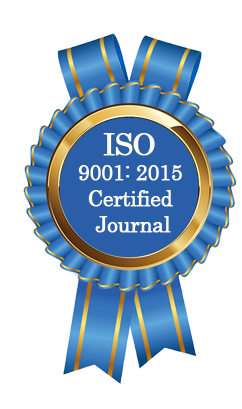| All | Since 2020 | |
| Citation | 105 | 60 |
| h-index | 4 | 4 |
| i10-index | 3 | 2 |
WJAHR Citation 
Login
News & Updation
Best Article Awards
World Journal of Advance Healthcare Research (WJAHR) is giving Best Article Award in every Issue for Best Article and Issue Certificate of Appreciation to the Authors to promote research activity of scholar.
Best Article of current issue
Download Article : Click here
Indexing
Abstract
EVALUATION OF THE ANTIMICROBIAL AND ANTIOXIDANT ACTIVITIES OF THE DRIED SEED AND FRUIT COAT OF DIALIUM GUINEENSE WILD (FABACEAE)
Johnson-Ajinwo Okiemute Rosa* and Yaere Prevail
ABSTRACT
The study evaluated the phytochemical constituents, proximate composition, antimicrobial, and antioxidantactivities of the dried pulverised seed and fruit coat of Dialium guineense wild (fabaceae). It addresses the needfor alternative antimicrobial agents, cheaper phytogenic feed additives, and antioxidants due to rising healthconcerns. The study's significance lies in exploring underutilized parts of Dialium guineense and contributing topotential applications in medicine and animal nutrition. The ripe fruits were harvested, identified, andauthenticated before undergoing extraction, partitioning into polar and non-polar fractions, and subsequentphytochemical screening. Proximate analysis, including moisture, lipid, ash, carbohydrate, crude fiber, and proteincontent, was determined using AOAC guidelines. Agar diffusion method was utilized to measure theantimicrobial activities of the fractions against selected microorganisms (E. coli, Klebsiella spp, S. aureus,Aspergilus niger, Penicillium spp, Fusarium spp, Candida spp.). Antioxidant capacities were determined using2,2-diphenyl-1-picrylhydrazyl (DPPH) method. GC-MS analysis was used for compound identification, andstatistical analyses were performed using Graph Pad Prism version 8.0 software. The results of the Phytochemicalscreening showed that the fruit coat and seed had relevant Phytochemicals present in them. The GCMS analysisresults of the non-polar fractions of the seed and fruit coat was found to contain 10 and 13 bioactive compoundsrespectively. The seed exhibited significant (p < 0.001) antioxidant activity compared to the fruit coat with an IC50of 11.49 μg/ml. The antimicrobial susceptibility test showed that the seed and fruit coat had activity against S.aureus, Klebsiella spp and Pseudomonas spp. The MIC values of the total crude extract of the seed against S.aureus, Pseudomonas app, and Klebsiella spp was 25%, 50%, and 12.5% respectively. Therefore, the seeds havebetter Antioxidant and antimicrobial activity compared to the fruit coat.
[Full Text Article] [Download Certificate]
